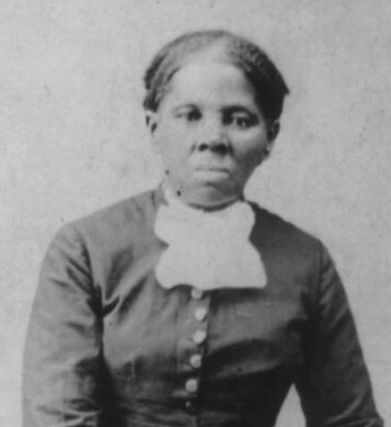Harriet Tubman the Underground Railway
Harriet Tubman was a fugitive slave who became an underground railroad conductor and helped many slaves escape their way to freedom by bringing them to the north.

Harriet Tubman, one of the most famous abolitionists.
February 16, 2019
Harriet Tubman was born into slavery in 1820 in Maryland. Harriet Tubman escaped slavery in order to become one of the most famous leading abolitionists. Originally named Araminta Harriet Ross, Harriet was the 5th child in her family and had four brothers and four sisters. Harriet changed her name to Harriet to honor her mother. Later on, Harriet was owned by Mary Pattison Brodess and Ben Ross.
Harriet’s early life was full of physical violence and difficulties. When Harriet turned five, she was a nursemaid and was whipped when the baby cried, this left her with physical and mental scars. As Harriet grew up and started to do good deeds, her head was struck with a heavyweight while trying to save a fugitive slave. Ever since then, Harriet had headaches along with vivid dreams and hallucinations that were described as religious visions. This made her less attractive to slave buyers/owners.
In 1844, Harriet married John Tubman, who was a free black man and changed her last name to Tubman, which used to be Ross. The marriage didn’t turn out well, as John threatened to sell Harriet further south. Along with her and her brothers, Ben and Henry, possibly being sold to people, Harriet planned to make an escape.
Harriet, Ben, and Henry escaped their Maryland Plantation on September 17, 1949. Even though the brothers changed their minds, with the help of the Underground Railroad, Harriet successfully traveled 90 miles north to Pennsylvania where she finally had freedom.
Harriet wanted to help her loved ones and her friends to have freedom so she led them to Philadelphia via the Underground Railroad. As laws like the fugitive slave act were passed, this made it hard for Harriet to help others who wanted to escape. When the Civil War began, Harriet started to find strategies to fight slavery. She assisted fugitive slaves at Fort Monroe and also worked as a cook, laundress, and nurse. Harriet made herbal medicines to treat sick soldiers and fugitive slaves.
Over the next years, Harriet teamed up with other abolitionists like Frederick Douglass and worked to end slavery. Its known that Harriet has emancipated 300 slaves as she established her own underground network.
Harriet Tubman died on March 13, 1913, due to Pneumonia. Her legacy still lives on as she has had a great impact on others and is still praised for her good deeds.



